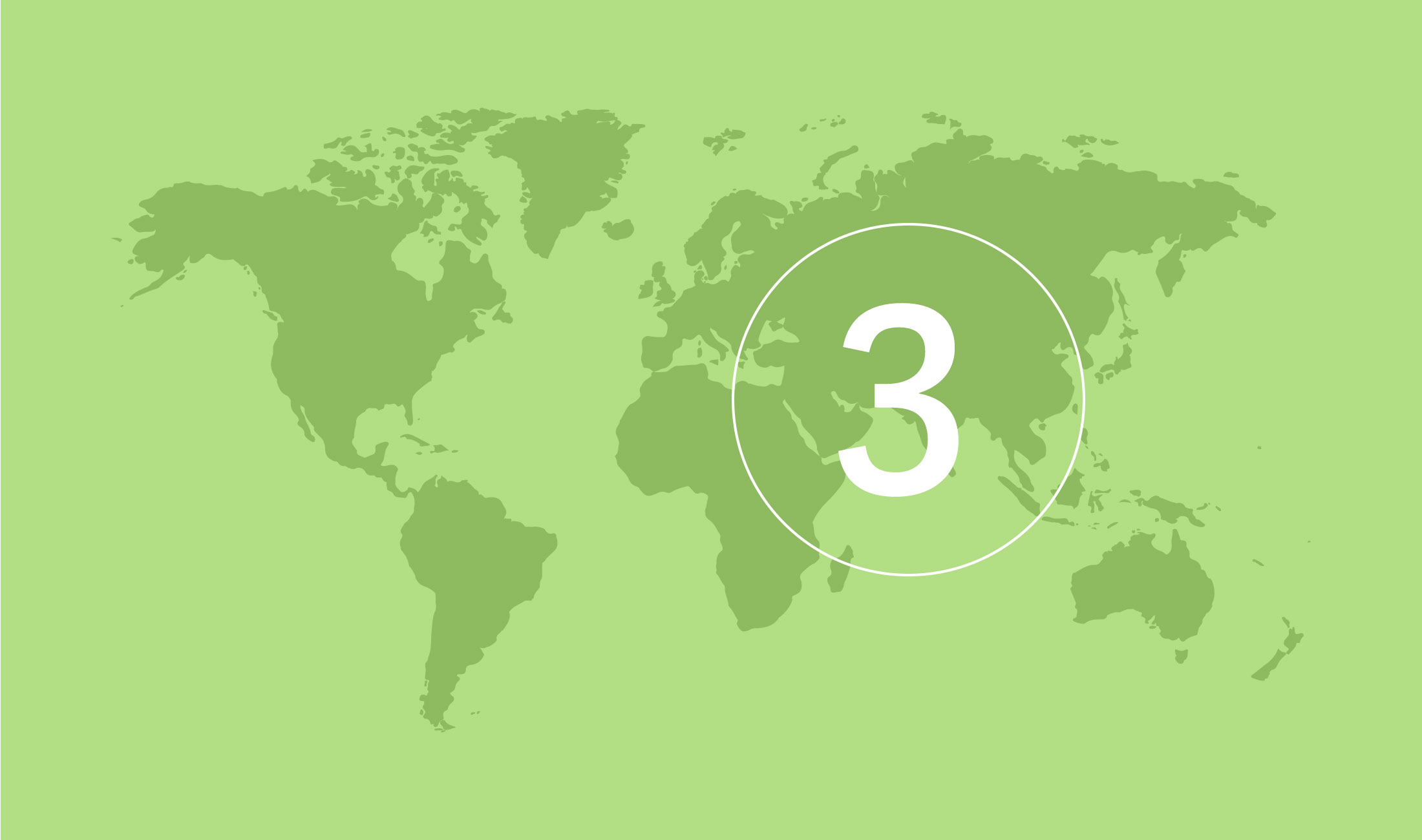
India
Category
3
- 0
- 1
- 2
- 3
- 4
- 5
- 6
- 7
| Risk type | Short | Long |
|---|---|---|
| Sovereign |

|

|
| Public |

|

|
| Bank |

|

|
| Corporate |

|

|
The icons indicate EKN's risk assessment.

No policy established

Normal risk assessment

Restrictive risk assessment

Normally off cover

OECD or EU countries
Country risk analysis
Country risk analysis archive
Country Risk Analysis of India
The latest Country Risk Analysis of India was issued in July 2025.
Large, diversified economy and external buffers provide resilience
India is the world’s most populous country, with 1.44 billion inhabitants, 42 percent of whom are under 25 years old. With strong growth prospects, India is expected to become the world’s fourth-largest economy in 2025 and the third-largest within 2–3 years. Growth is primarily driven by domestic demand. Private consumption accounts for around 60 percent of GDP, while investments are robust at approximately 30 percent.
On the production side, the services sector dominates. However, the informal sector provides the majority of employment. Agriculture alone (about 16 percent of GDP) employs over 40 percent of the labour force. Given widening income inequalities and a young, growing workforce, a key challenge for India is to create more formal and productive jobs.
The economy is diversified with strong global positions in information technology, pharmaceuticals, steel, and petrochemicals. However, both the size of the manufacturing sector and goods exports are limited (each representing 12–13 percent of GDP), as is integration into global value chains. Combined with limited natural resources, this contributes to structural trade deficits.
Meanwhile, India’s export orientation is gradually increasing. Geopolitical tailwinds are helping attract more international companies to establish production in India, as evidenced by the recent upswing in electronics exports. India also has a growing, increasingly sophisticated services export sector (around 10 percent of GDP), particularly digital services within consultancy, research, and development, where international firms are establishing global service hubs.
Services exports and remittances have strengthened India’s current account, where deficits remain moderate and are largely financed by foreign portfolio and direct investment (FDI). This keeps the country’s external position strong. Robust foreign exchange reserves cover over 80 percent of India’s low external debt (about 19 percent of GDP). Although persistent fiscal and current account deficits represent a degree of vulnerability, India’s large, diversified economy and external buffers provide resilience against external shocks.
Strong but moderating growth outlook
In the 2024 elections, Prime Minister Modi’s government, led by the Bharatiya Janata Party (BJP), secured a third five-year term. The loss of a parliamentary majority means the BJP is now reliant on coalition partners it has worked with over the past decade. Nonetheless, the outcome is expected to ensure continuity in economic policy, emphasising growth-oriented reforms focusing on the supply side of the economy.
Macroeconomic stability has been bolstered by a strengthened policy framework, including an inflation target, increased independence for the central bank, a flexible exchange rate, and flexible budget deficit ceilings at federal and state levels. Prioritisation of infrastructure investments supports growth potential. A national goods and services tax system broadens the tax base.
Reforms in the banking sector—particularly in state-owned banks—stricter oversight of financial companies, and an insolvency framework have helped reduce the share of non-performing loans in the banking sector to its lowest level in a decade. Liberalisation of capital flows aims to attract FDI and portfolio investment. The rapidly expanding digital infrastructure is driving a swift digitalisation, central to modernising and formalising the country’s economy.
However, the fact that reforms have not fully broken the structural trend of weak job creation, and that private corporate investment has not yet gained momentum, suggests the processes take time, given a large public sector and a complex federal political system where reforms can struggle to achieve nationwide impact. In light of increasing global trade tensions, there are signs that reform policies are shifting towards further deregulation for businesses, investment, and trade, which could eventually help foster a more open and trade-oriented Indian economy.
India’s economy has exhibited strong GDP growth post-pandemic, averaging 8.8 percent during fiscal years (FY) 2021–2023. Growth then moderated to 6.5 percent in FY2024 (ending 31 March 2025). Slightly weaker growth is expected this year due to rising uncertainty in the global economic outlook. Thanks to a large domestic economy and a more services-oriented export sector, India is considered somewhat less and more indirectly exposed to US trade policy. The reform agenda over the past decade has laid the foundation for medium-term growth rates in line with the 6.6 percent average seen in the decade preceding the pandemic.
Fiscal consolidation slows
Public finances remain the country’s main macroeconomic weakness. Between 2018–2020, debt relative to GDP increased from 70 to 88 percent due to large fiscal deficits during the pandemic and lower GDP growth. Since then, the debt ratio has been reduced to 80 percent, and government policy aims to continue gradually reducing fiscal deficits. This is supported by a strengthened fiscal policy prioritising protected infrastructure spending, reduced subsidies, and tax reforms alongside digitalisation to broaden the tax base.
However, the pace of consolidation is expected to slow, given ambitions to stimulate growth through tax cuts over the next few years, weak finances in many states, and high interest expenses consuming around 25 percent of government revenues. As a result, the debt ratio is expected to remain slightly above 75 percent. Vulnerability to liquidity and exchange rate risks is mitigated by the fact that over 90 percent of government debt is domestic, denominated in local currency, and long-term.
Long-term climate change challenges
India is among the more exposed middle-income economies in Asia to climate change and transition risks. Contributing factors include agriculture’s importance, with nearly two-thirds of the population directly or indirectly reliant on farming for their livelihoods, challenges stemming from population pressure, such as water availability, and a fossil-heavy energy mix. In ND-GAIN’s index measuring countries’ vulnerability to climate change and their capacity to address related risks, India was ranked 111 out of 181 countries (2023).
The consequences of climate change are difficult to quantify, but the incidence of extreme weather events appears to be increasing, as does variability in the crucial monsoon rains, contributing to higher and more volatile food inflation. In the long term, model estimates by the Asian Development Bank (2024) point to a potential GDP loss of 10–15 percent by 2050 compared with scenarios without further climate change.
Business environment
Over the past decade, reform efforts have been initiated to enhance India’s competitiveness and business environment. Sustained investment in infrastructure and logistics networks is helping integrate the vast Indian market and reduce India’s high energy and logistics costs. Corporate tax rates have been cut to levels more in line with competing Asian countries. Regulatory easing aims to attract FDI, and labour laws have been simplified. Rapid digitalisation supports these reforms. The number of internet users has steadily increased, reaching over 60 percent of the population in 2024.
The introduction of a digital identity system (Aadhar) and a government payment platform (UPI, 2016) is driving expanded access to digital financial services, commerce, and payments. These reforms lay the groundwork for e-governance and can strengthen administrative coordination. Improvements are reflected in indices measuring investment and business climate. In the World Bank’s Logistics Performance Index, stronger scores suggest infrastructure investments are beginning to bear fruit. In the World Bank’s Governance Indicators (WBGI), India’s performance in economic institutions has improved over the past decade and is now somewhat above the average for Asian emerging and developing economies.
From EKN’s credit risk perspective, important aspects of the business environment include predictability and quality of regulations affecting debtor finances, as well as the country’s legal environment in relation to creditors’ rights. In regulatory terms, India’s WBGI scores are somewhat stronger than the regional average. Nonetheless, the regulatory environment is assessed as complex, with extensive bureaucracy at many levels. There are also examples of regulatory interventions with significant impact on specific sectors, such as retroactive tax reassessments for the telecom sector in 2020 and the mining sector in 2024.
On the positive side, in 2025 the government commissioned a review to propose ways to reduce the regulatory burden on businesses within a year. The business environment can vary between states. The central government encourages states to improve their local business climates to attract investment, and in 2025 an “Investment Friendliness Index” will be introduced to facilitate comparisons. However, weak finances and limited transparency among states and related entities complicate risk assessment of such counterparties.
Corruption remains another challenge. In Transparency International’s Corruption Perceptions Index 2024, India was ranked 96 out of 180 countries, in line with the regional average (93), but down from 80th place in 2018.
Regarding the legal environment, India’s WBGI scores are also somewhat stronger than the regional average. A key reform is the Insolvency and Bankruptcy Code (IBC) introduced in 2016. This legislation has facilitated corporate restructurings and the management of bad loans. A time-bound insolvency process, adjudicated by specialised courts, is intended to ensure faster resolution and higher recoveries.
In practice, however, processes have taken significantly longer than the law prescribes, and court waiting times can be substantial. The framework appears more favourable to financial creditors than suppliers, with domestic financial creditors seemingly enjoying some advantages in restructuring negotiations. Another challenge is the underdeveloped distressed asset market, which hampers valuations. Since 2024, efforts have been underway to establish an electronic auction platform to increase transparency and information dissemination in liquidation sales.
Evaluations of the IBC, including those by the Insolvency and Bankruptcy Board of India, suggest several positive trends: the threat of liquidation has increased debtors’ willingness to settle before court proceedings, and the share of insolvency cases ending in liquidation has steadily declined. This is positive for creditors, as recoveries are generally lower in liquidations than in restructurings. Recovery rates in restructurings reportedly average just below 35 percent. However, EKN’s past experience indicates legal proceedings can be lengthy, outcomes uncertain, and recovery rates low—especially for foreign creditors or in cases lacking collateral.
For Swedish exporters, the regulatory environment is considered challenging. India follows import-substitution strategies aimed at stimulating domestic manufacturing, which risks constraining Swedish companies’ export opportunities and hindering India’s integration into global supply chains. Over the past decade, there have been signs of increased protectionism through raised tariffs, particularly on intermediate and capital goods, and complex import regulations.
Recent years have also seen a sharp rise in regulations on local standards through so-called Quality Control Orders (QCOs), often introduced with limited consultation, tight implementation timelines, and long waits for licences. Meanwhile, India’s approach to bilateral free trade agreements has become more open. In spring 2025, an agreement was reached with the UK, and negotiations are ongoing with the EU, Gulf countries, and the USA. These four markets account for over 50 percent of India’s goods exports. In 2025, the government also launched a review to rationalise and reduce import tariffs. The trend towards greater openness and geopolitical considerations could increase foreign companies’ interest in integrating India into global value chains.
EKN’s business assessment considers the risk of negative impacts on human rights (HR), focusing on the potential impacts arising from activities in the countries where exported goods will be used. Relevant issues include working conditions, child and forced labour, excessive use of force by security forces, indigenous peoples’ rights, and land rights. In Maplecroft’s HR Index for these dimensions, India scores similarly to other lower-middle-income countries, though indicators point to slightly higher risk levels regarding forced labour, occupational health and safety, and security forces’ human rights conduct. India shows somewhat lower risk levels concerning access to remedy.
EKN’s policy
EKN classifies India in country risk category 3 (on a scale from 0 to 7). Standard risk assessment applies to all debtor categories, meaning there are no predefined restrictions on guarantee issuance, and transactions are assessed on their own merits without special requirements or conditions.
EKN’s commitment and experience
EKN’s current exposure amounts to approximately SEK 13 billion, dominated by telecom. There are also transactions in the power sector, medical technology, and construction machinery. Between 2020–2024, EKN issued guarantees in over 200 transactions for around 30 exporters, totalling SEK 29.7 billion. However, a large telecom deal accounted for over 90 percent of this amount. Of the remaining SEK 2.2 billion, around 20 SMEs and trading houses accounted for two-thirds of guarantee volume, with over 70 percent of deals having a credit term of less than one year. EKN’s payment experience is mixed, with delays being common.
Contractual late payment interest is advantageous, as EKN’s experience indicates supplier credits with low penalty interest tend to be deprioritised. Of guarantees issued between 2020–2024, payment delays were reported in around 20 percent of transactions, with average delays lasting 114 days. However, no guarantees issued during this period resulted in claims. For guarantees issued before 2019, EKN has paid out claims totalling over SEK 890 million in the past 15 years. The losses are concentrated in a few deals and represent less than two percent of EKN’s total guarantee volume for India over these years. Recovery rates in claims paid have been very low.
Learn more about exporting to India

- Financing
- Guarantees
- Trends
EKN scores a double at GTR Awards
EKN was awarded “ECA Of The Year” and the deal behind the massive 5G rollout in India was recognized as one of the ten “Best Deals of 2024”.
EKN scores a double at GTR Awards
- Financing
- Trends
- Trade
Record deal behind record-time 5G rollout in India
In the largest private deal ever supported by EKN, Ericsson delivers equipment worth over USD 2 billion for the rollout of 5G technology across India.
Record deal behind record-time 5G rollout in IndiaMore for companies that want to export to India

EKN's guarantees
EKN's guarantees reduce the risk of payment defaults and help banks support businesses. Which guarantee suits your needs?
EKN's guarantees
Guarantee guide
Are you unsure which guarantee is the best fit for your specific transaction? Try our guarantee guide.
Guarantee guide